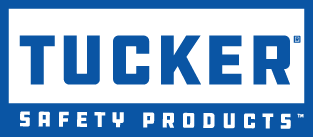Foodservice: Cuts Are Not On The Menu
Keep hands working and productive for a lifetime…
Our hands are our utensils of choice, and if you remember one thing – our hands don’t come with replacement parts!
Almost every commercial kitchen contains sharp objects or surfaces that can lead to cuts and lacerations. Knives, slicers and glassware are essential tools in most restaurants, elevating the risk of someone getting cut with a sharp blade or broken glass – it’s not surprising that cut and laceration injuries are a concern.
Commercial kitchens can be hectic during food preparation and your attention can be easily pulled away from the task at hand. It is easy to let your mind wander when performing a chopping or cutting activity that you are accustomed to, but that is also how accidents happen.
Cut and laceration injuries can range in severity, but serious ones can easily result in a claim. In some cases, this can also put valued team members out of commission for an extended period. Cut injuries not only impact the injured worker, they can also result in lost productivity, potentially higher insurance premiums, and costly out-of-pocket expenses for an industry with razor thin margins.
To Help Avoid The Risk Of A Cut Or Laceration…
Separate Sharps: the most dangerous knife is the knife you cannot see. For that reason, it is important to keep knives out of sinks. Create a designated container for dirty knives or have employees who are using the knives clean them immediately after use.
Proper Techniques: before you give access to knives, ensure workers are trained on proper knife techniques – including cutting away from the body and fingers, keeping the blade pointed down and close to the body when carrying a knife through a busy kitchen, holding the non-sharpened side of the knife and extending the handle to a person you’re handing a knife to, and never attempting to catch a falling knife.
Cut Resistant Gloves: while these gloves are extremely effective in preventing cuts it is important to remember they are cut resistant, not cut proof – injuries can still occur. When purchasing cut resistant gloves, order multiple sizes to ensure each member of your kitchen team has a properly fitting glove.
Cutting Boards: use of cutting boards prevents objects from slipping while they are being cut.
Maintenance: dull and improperly maintained knives are the most common cause of cuts and lacerations. Dull blades not only slip but decrease accuracy and performance. Blades should be sharpened once or twice weekly depending upon usage. When sharpening knives also inspect the handles and if loose tighten. If the handle cannot be tightened the blade should be properly disposed.
Focus: Using a sharp knife can be dangerous and requires your complete concentration. It is important to have a policy instructing workers not to communicate with one another when using a knife. Even though this sounds impractical in a busy kitchen, it will increase efficiency and reduce accidents.
Use the correct knife for the job: ensure workers have proper training on what knife to use for what job – chef’s knife for large or firm food, serrated knife for tomatoes, breads, pies, etc., and paring knives for delicate and precise work on small food items.
Mechanical Slicers: most mechanical slicers operate on electricity and must be used with great caution. Because the blade rotates at very high speeds, it can cause grievous injury to any body part it comes in contact with; Follow manufacturers safety guidelines when slicing food; wear cut resistant gloves on both hands when cleaning slicers that are off and unplugged.

